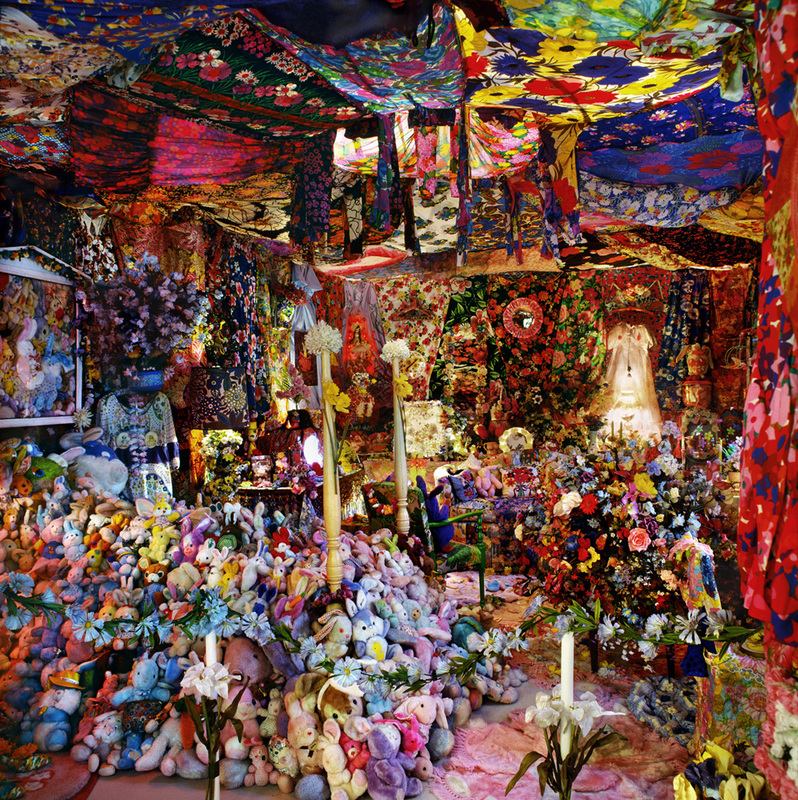Project Vortex: Designers, Artists, and Architects Collaborate to Prevent Plastic Waste
It’s almost impossible to tell that the bright and bold sculptures of artist Aurora Robson, glistening in the light, were once plastic debris polluting the ocean. The captivating and colorful strands of red, orange, and yellows, monumental in size, are perhaps the antithesis of how we perceive trash.
This transformation, from environmental waste to works of art, is the central focus of Robson’s artistic vision, and it expands far beyond these monumental sculptures. As the founder Project Vortex, an international collective of over 20 artists, designers, and architects who are using plastic debris as the material for their work, Robson is committed to raising awareness about environmental waste through art.
Robson founded Project Vortex after working with debris for years. “It is a straight uphill battle and so few people seem to be paying any attention to the issue,” she tells us. “The more I’ve learned about how much plastic debris is accumulating in our oceans– and the amount of related chemicals in our bloodstreams, and about plankton ingesting micro-plastics– the more determined I’ve become to try to find a way to help people learn about the effects of our over-consumption of single-use disposable plastics and to shift this trajectory.” Robson founded the collective as a way to collaborate with other artists who were tackling similar issues in their work.
“The impulse to make a piece of art is precisely the opposite of the impulse to throw something away,” Robson said in her TEDx talk “Trash + Love.”
What binds these artists together is the ability to transform trash into something beautiful.
While some artists who are part of the collective take up whole gallery spaces, others create work for public parks. Portia Munson’s “The Garden” (1998) is a constructed space viewers can walk through that’s filled with plastic flowers and other disposable objects, calling attention to consumerism and collective waste.
“A New York minute” by Studio KCA is a large cloud-shaped outdoor sculpture that provides a resting place for two to four people, created from the number of plastic bottles that are thrown away in one minute in the U.S. The piece both transforms an abstract concept of waste into something tangible, and transforms the physical objects of waste into a functional work of art in the process. What binds these artists together is the ability to transform trash into something beautiful.
The vast range of artworks is aesthetically surprising and captivating, and they are provocative in their ability to present an opposite vision of waste and to shift people’s perception of plastic debris. Often, the material itself becomes a source of inspiration for Project Vortex artists, rather than an obstacle to creating something beautiful. “There is so much potential in so much of the material that is all around us and most of us fail to see it,” Robson explains.
“The material has so much ‘plasticity’ build into it; it is a unique material to work with because it offers qualities no other material offers, plus it has archival integrity built into it, which is great for art but terrible for the environment.”
In the future, Robson would like to expand the kind of materials she works with. “I am really interested in working with ABS car parts from the waste stream, especially since so much of that ends up in landfill and isn’t getting recycled,” she says.
Project Vortex’s goal goes beyond simply the artists working within it. Another component, Project Vortex University, is dedicated to teaching students and the next generation about the potential to address environmental waste through art.
A virtual library educates people about different aspects of plastic waste and prevention, and the syllabus of a college course called “Sculpture + Intercepting the Waste Stream,” which Robson developed and taught, is also publicly available.
“The goal is to help find innovative ways to secure this incredible ecosystem upon which we all depend and to develop communities around it,” Robson said. “Participating in eye-opening river, shore, and stream clean ups is actually inspiring if the goal is to find material to use for art instead of merely to clean up after people.”
As far as the artistic process goes, Robson sees another unexpected benefit to working with debris: “the fear a lot of young creatives experience staring at a blank piece of paper or canvas is eliminated, because you can’t possibly make a piece of plastic pollution worse than it is.”
To learn more about how to mitigate your plastic footprint, consider doing a plastic cleanse.





































